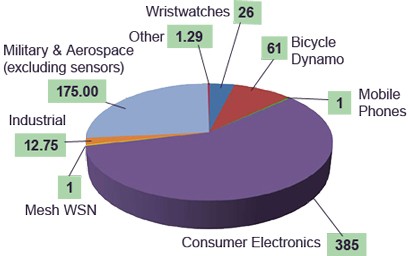Report: Energy harvesting technologies will generate $4.4B by 2021

Energy harvesting may happen in small devices, but it could be a big market just 10 years from now. That's according to recent research from IDTechEx, which is forecasting revenue for these technologies at something like $4.4 billion by 2021.
Right now, the biggest place this concept shows up is in consumer electronics gadgets, according to the report ("Energy Harvesting & Storage for Electronic Devices 2011-2021"). But emerging applications for smart grid (think wireless sensors) and energy storage (certain military and aerospace applications) will reshape the market over the next decade, according to IDTechEx.
The image below shows the research firm's current breakdown for 2011 (the numbers are in millions of $):
Most of the harvesting that goes on today is supported by solar cells and electrodynamics methods, but the report suggests that thermoelectrics, or the process of deriving energy from heat, will play a much larger role in the future. The other technology drawing more interest is piezoelectric technology. That's the concept that energy will be created by certain materials if stress or pressure is implied. To put it more simply, it's the idea that touch could help generate electric current.
The biggest factor in 10 years, however, will still be solar. That's because right now that's the technology that makes the most sense for wireless sensor technology. IDTechEx figures that there could be 250 million wireless sensors deployed by that time, powered by energy harvesting. This year, it figures there will be 1.6 million in place. That's a big leap in 10 years' time.
